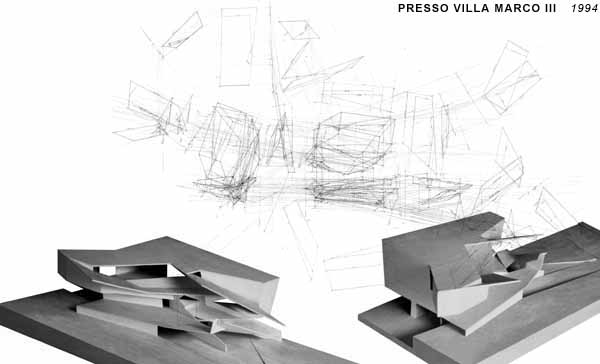

When the lineaments of a perspective are brought into coincidence with those of stereotomic projection, fixity of point of view and the infinity of orthography become mired in a logical contradiction. On the one hand, points of convergence (the eye and distance point) constellate a perspective and an object. On the other hand, these same points, extended as fold lines, are shared by the surfaces of three dimensional objects formed by both the original object and its perspective; since they are stereotomic, these combinatory objects contradict perspective by positioning the viewer at an immeasurable distance from the entire object. The result is an apparent anamorphosis with the points from where one could gain an undistorted view in positions that can never be occupied.
From three dimensions to two and back to three again;
reversals exaggerate the combined methods and in so doing eliminate the
boundary between description and perception. The matrix that once separated
things by distinctly defining them has become the process by which things
are rendered indivisible.![]()
projects | 1 | 2
| 3 | 4
appendx inc.©1997